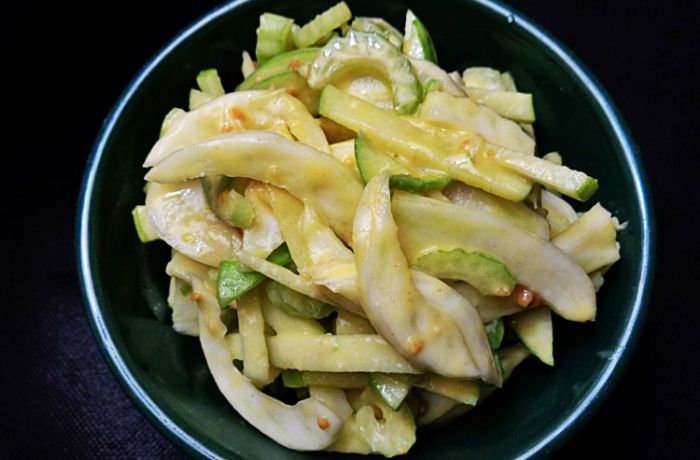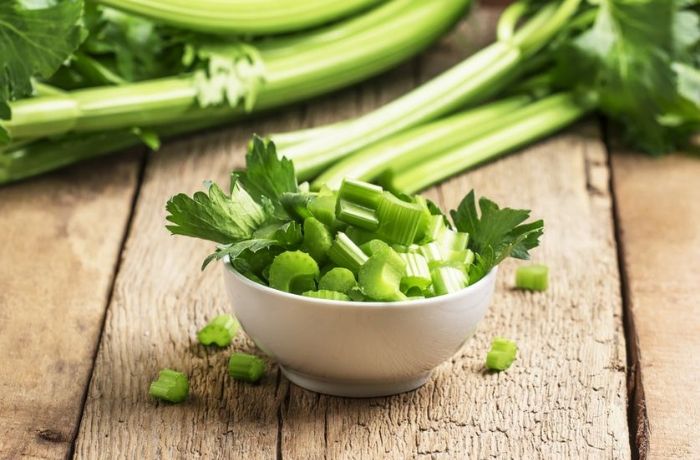
Celery’s popularity has skyrocketed over the last years, thanks to the rediscovery of its healthy attributes of being filled with antioxidants and essential minerals. In the garden, however, celery has always had a slightly more notorious reputation for being a frustrating crop to grow. Don’t let that put you off though, as with a few simple tips and tricks that we’ll teach you here, celery can thrive in your veggie patch too. Follow along carefully on this guide on how to grow celery and you’ll be snacking on homegrown celery and peanut butter in no time.
VARIETIES
When it comes to choosing which celery to grow, an important term that’s used is ‘blanching’. If left to its own devices, celery will happily develop dark green stalks that have a strong, bitter flavour. To avoid this, many people blanch their celery, which is the process of covering the stalks to reduce the amount of sunlight they receive. This in effect stops the stalks from going bitter, and as a result they also get paler in colour - similar to the celery we buy in the shop.
Although most gardeners prefer to blanch celery themselves, there are certain self-blanching varieties. To get you started on choosing the type of celery you’d like to grow, we’ve listed some of our favourite varieties below:
Tall Utah: A tall and compact growing celery variety with a pleasant flavour. Its tolerance to disease makes Tall Utah a great all-rounder. Enjoyable both cooked and raw, and a great addition to soups, stews and salads.
Golden Self Blanching: This heirloom celery is slightly smaller in height but you won’t need to worry about blanching this variety. With its juicy stalks, resistance to diseases and excellent flavour, the Golden Self Blanching celery is a great starter if you’ve never grown celery before.
Amsterdam: Amsterdam celery is grown more for its fragrant leaves, which can be used as a flavouring in soups or stews or even as a garnish. Although the stalks are also flavoursome, they’re quite fibrous and best enjoyed when cooked.
Conquistador: If you’re based in a hot climate then we recommend growing the Conquistador variety. This celery is widely adaptable to different climates and soils, and has a higher tolerance for hot temperatures. The stalks of the Conquistador celery are tall and compact with a wholesome flavour.
Giant Red: As the name suggests, the stalks of this variety develop a deep red colour. With its bright green leaves and red stalks, this variety looks great both in the garden as well as on the plate.
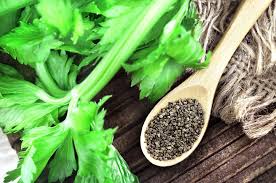
HOW TO GROW CELERY
If you’re growing celery from seed, then you’ll want to soak them in water 24-hours before sowing. Celery seeds can be tricky because of their small size. A simple tip is, once the seeds have been soaked, to mix them with a tiny bit of sand and sprinkling the seed-sand mix onto potting soil. Don’t bury your seeds, instead gently press them into the soil. Keep your planted seeds indoors at a temperature around 15°C to 25°C and wait until they have germinated and developed into seedlings. On a side note: many garden centres and nurseries also sell celery seedlings - this might be an easier option!
Prepare your soil outside a week or two before transplanting your seedlings. Celery develops very shallow roots and therefore requires a very nutrient-rich, well-drained soil. Mix in a generous amount of compost and well-rotted manure to create the perfect soil for your vegetables. When transplanting your seedlings outside, leave around 30 cm between each plant.

Where and when to plant Celery?
Celery is like the Goldilocks of vegetables - it doesn’t like its weather too warm or too cold. Instead, it requires a mild climate throughout the entire growing season. In order to increase the success of your celery, we recommend sowing the seeds indoors and transplanting them six to eight weeks later. Cooler regions of Australia will want to sow their seeds in October, whereas tropical climates will be looking to sow them in April. Take a look at the table below to figure out when to plant your celery:
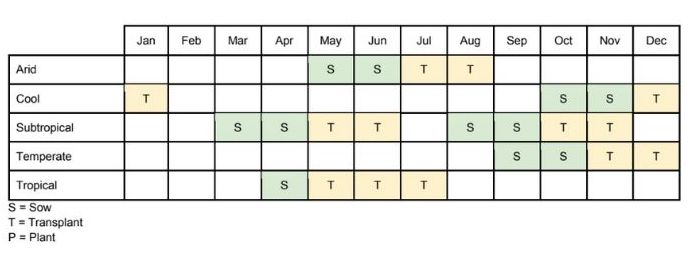
WHERE TO BUY CELERY SEEDS
Purchase heirloom celery seeds from our friends at the Diggers Club, Australia's oldest gardening club.
Diggers Safe Seed Pledge
Seeds are the basis on which our lives depend. We will promote their diversity and free availability, and fight all attempts to own or destroy our garden inheritance of open pollinated heirloom seeds. We oppose genetically engineered seeds that promote the use of chemicals. We support sustainable slow food agriculture.
Purchase seeds here
Growing celery pro tips:
Soil: Celery requires rich, well-drained soil so you’ll need to mix in a generous amount of compost and well-rotted manure.
Water: Water you celery regularly to keep the soil moist. A good tip for retaining the soil moisture is to apply a layer of mulch around your plants.
Fertiliser: Celery plants are heavy feeders. To keep them satisfied we recommend applying a liquid fertiliser every two weeks.
Blanching: As mentioned above, celery goes dark green and bitter in taste if unblanched. Wait until there are around 2 weeks left till harvest. The stalks will have grown to around 20 to 30 centimetres tall by this point. Tie the stalks together, to keep them compact, then wrap them in a thick layer of newspaper, leaving just the leaves exposed and sticking out at the top. Your celery will now become less bitter, more pale and ready to harvest in 2 weeks time.
How and when to harvest Celery
Depending on the variety you’ve chosen to grow, your plants will be ready to harvest anywhere between 12 to 18 weeks. You can either harvest the celery whole by using a knife to cut the base, as close to the roots as possible. If you’d like to harvest a little less, then a second option is to remove the stalks individually.
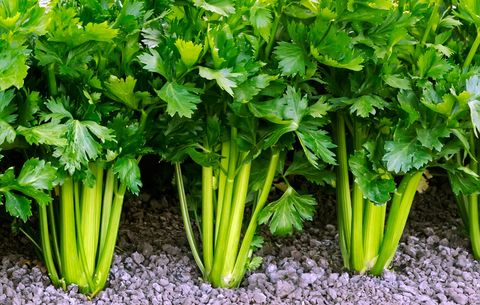
How to prepare/preserve Celery
Celery can be stored for several weeks in the refrigerator. You’ll want to give the stalks a rinse, then chop them up into smaller segments and place them in an airtight container in the refrigerator. If you’d like to keep the celery for longer than a few weeks you can also place the airtight container in the freezer.
Whilst the stalks are delicious for eating, the leaves are great for flavouring. When dried, you can add them into soups or dishes directly, or even make your own homemade stock! First, you’ll want to cut off the leaves from the stems and rinse them gently with water. Next, space the leaves out on a tray and place this in a well-ventilated room. Leave for around a week, or until dried out. If the leaves are completely dehydrated then you should be able to crumble them off the stalks easily. Crumble them into an airtight container and keep them stored with the rest of your herbs in your kitchen.
Celery Recipes
Celery is not only fantastic for adding a crunchy texture to dishes but also for providing a fresh taste. It’s delicious to snack on uncooked, however, if you’re in need of a quick soup to warm you up after a day of gardening, then try out this celery soup recipe. Or perhaps you’d like to enjoy your celery raw but in a salad? Look no further than this delightful fennel, celery and apple salad. This next recipe is for those blue cheese lovers out there, you’ll enjoy this roasted celery and Roquefort tart with thyme pastry. And last but not least, celery also goes well in cocktails! Take for example this celery gimlet, or this celery gin fizz - enjoy!
